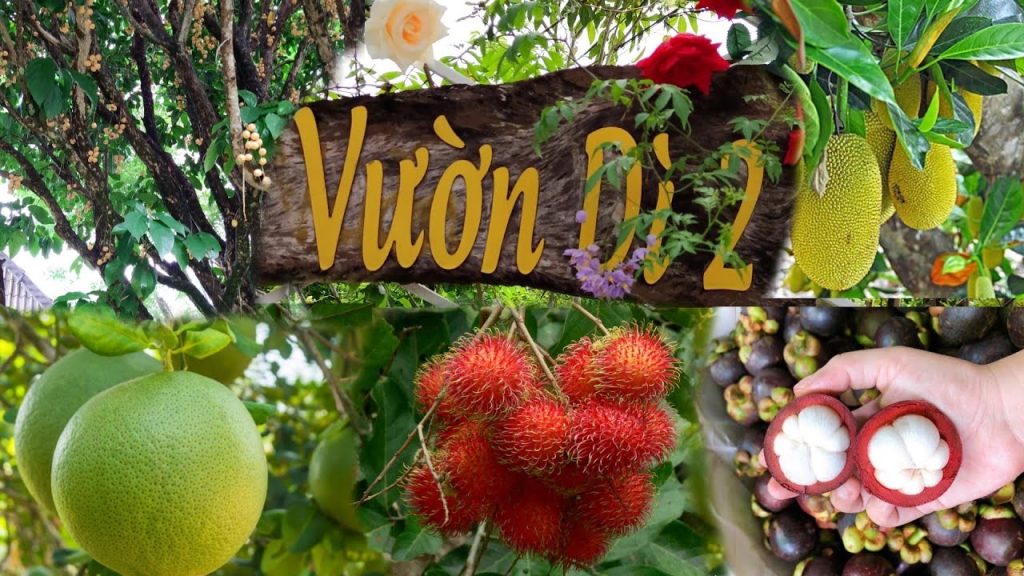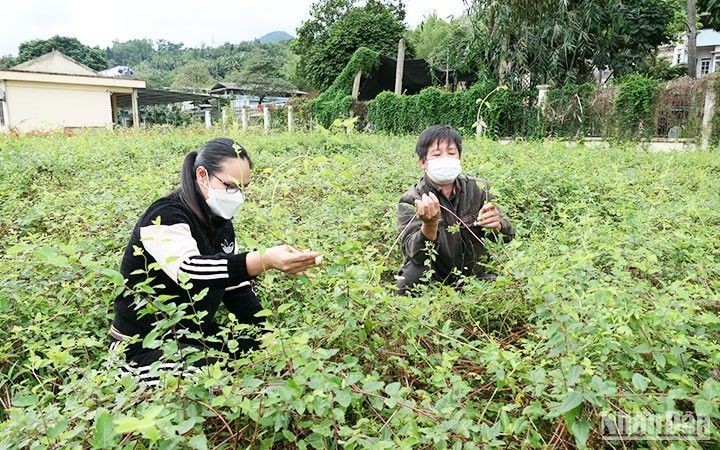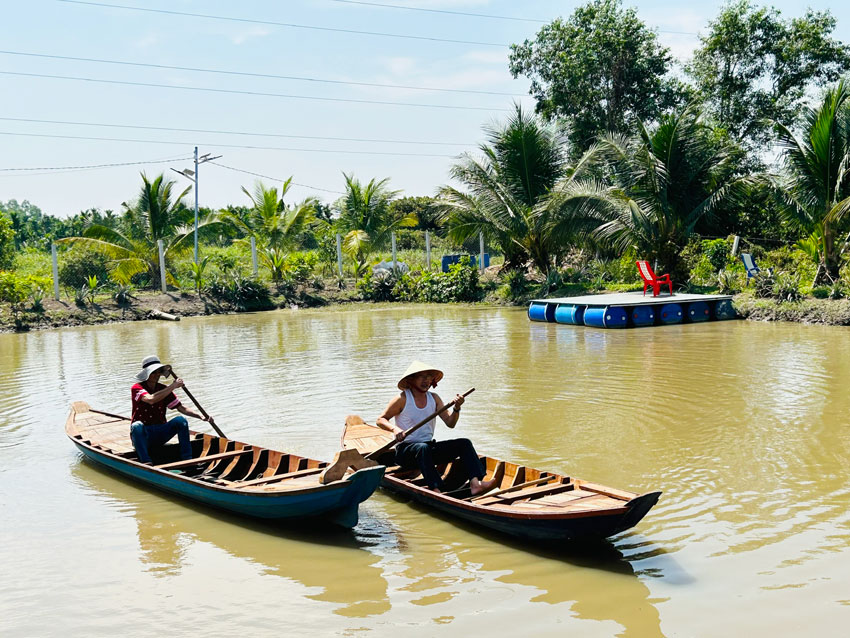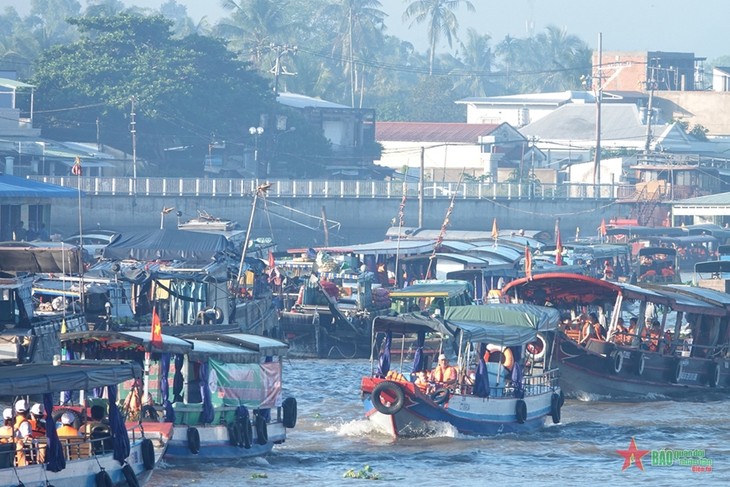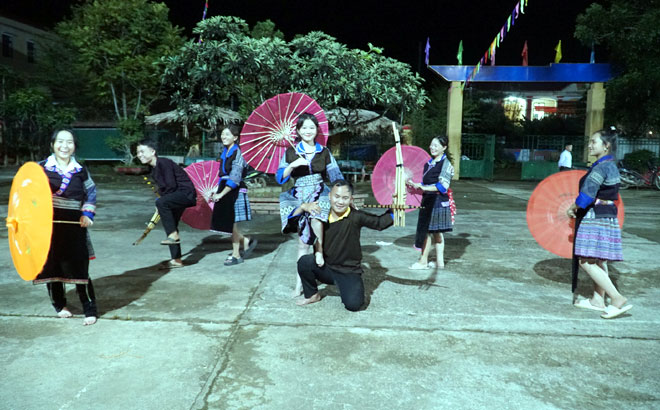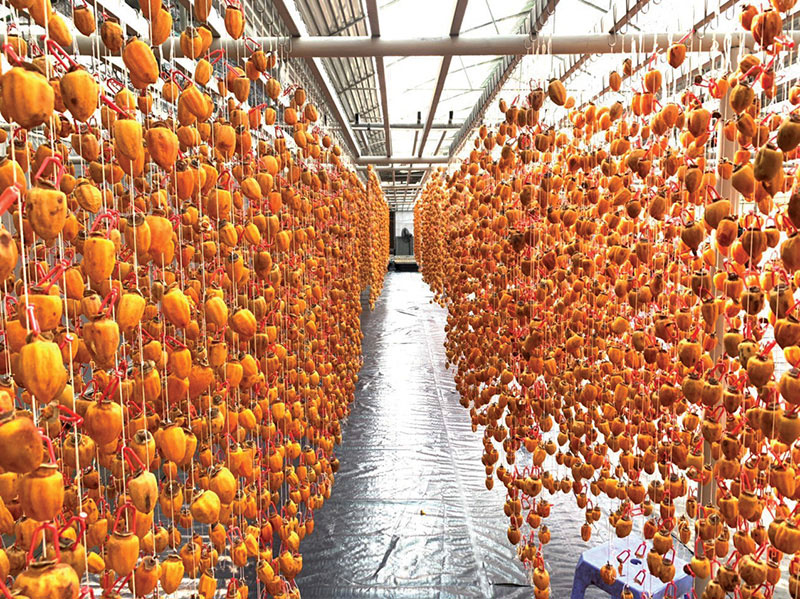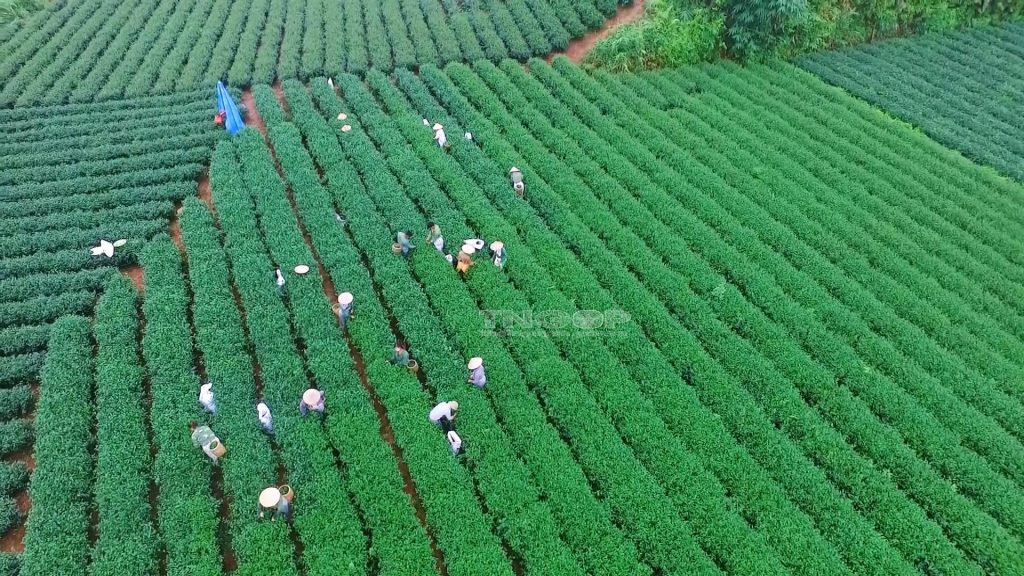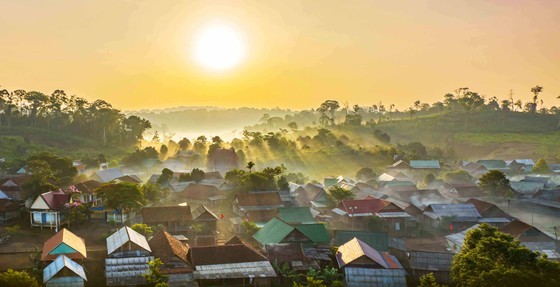(TITC) – An Giang, located in the Mekong Delta of Southern Vietnam, is a land blessed with poetic rivers, majestic mountains, and a rich cultural mosaic. Among the many ethnic groups living here, the Khmer community has long played a vital role in shaping local traditions, livelihoods, and culinary identity. One of their most unique and beloved contributions is palm sugar – a specialty deeply rooted in daily life, beliefs, and the cultural heritage of the Seven Mountains region (Tri Ton – Tinh Bien).
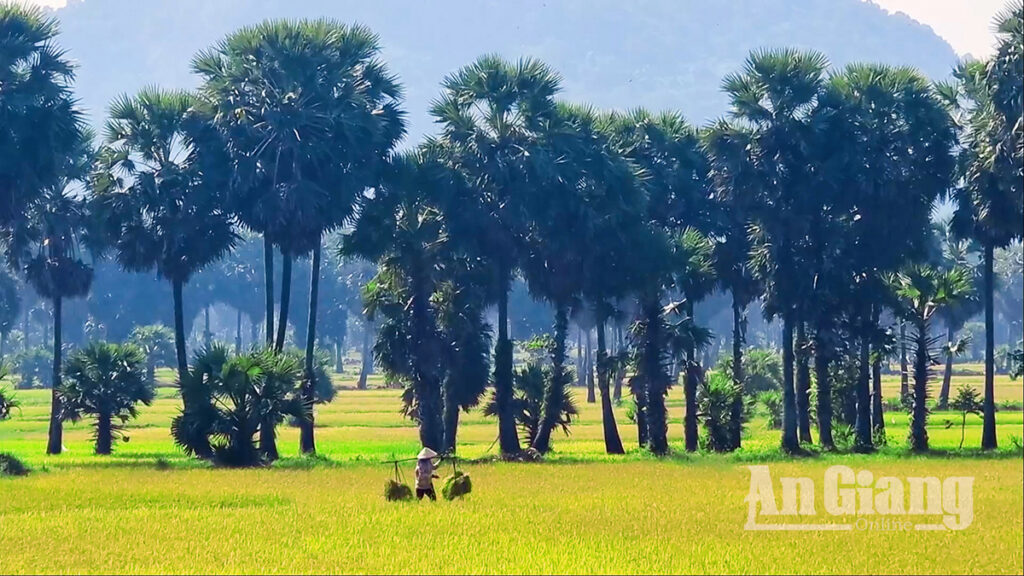
Rows of lush palmyra palm trees line the golden rice fields heavy with grain
From palm blossoms to golden sweetness
The palmyra palm tree, locally called thốt nốt, resembles a coconut tree in appearance but thrives on arid soils, symbolizing resilience and endurance. Its blossoms produce a naturally sweet sap that Khmer farmers skillfully collect to make palm sugar. The process is demanding yet full of artistry: each drop of sap is carefully gathered at dawn, boiled continuously for hours without any chemical additives, and slowly transformed into a thick golden-brown syrup. Once cooled, it solidifies into round or conical blocks with a gentle aroma, a rich amber color, and a mellow sweetness unlike any other sugar.
A versatile ingredient in Khmer cuisine
Palm sugar is more than just a sweetener – it is a culinary treasure that elevates countless local dishes. Traditional Khmer delicacies such as bánh bò (steamed sponge cake), sticky rice, or sweet soups owe their signature flavors to palm sugar. It is also used in savory dishes: braised fish, dipping sauces, and herbal drinks all gain depth and balance from its subtle sweetness. Beyond sugar blocks, fresh palm sap can be enjoyed as a refreshing drink, while the jelly-like palm fruit flesh is a favorite among tourists for its cooling, delicate taste.
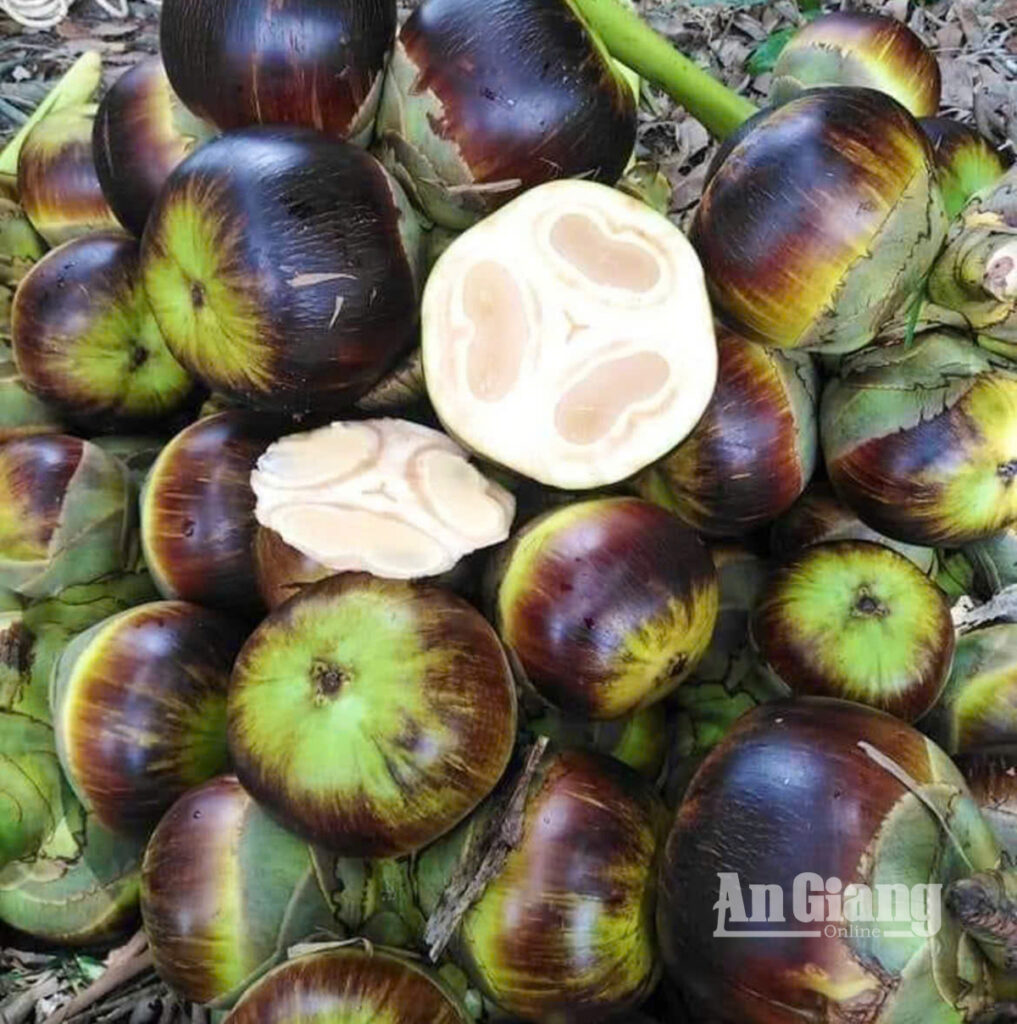
Palmyra fruits
A craft passed down through generations
For the Khmer people of An Giang, palm sugar production is not only a source of income but also a way to preserve their ancestral craft. A single palmyra palm can produce sap for several decades, yet it takes 8–10 liters of sap to yield just one kilogram of sugar. The process is entirely manual: climbing tall trees, collecting sap, boiling it in large pots over wood fires, and skillfully stirring to achieve the perfect texture. Despite the hard labor, families continue to follow the traditional method, ensuring the purity and authenticity of the product.
A gift of the borderland
Visitors to An Giang often encounter palm sugar at local markets in Tinh Bien or Tri Ton, or purchase it directly at family-run workshops. The sugar is usually molded into small cakes and wrapped in palm leaves, resembling miniature sticky rice cakes (bánh tét). These rustic packages are more than just a practical way of preserving the product – they carry the charm of local craftsmanship, making palm sugar an ideal gift to bring home.
Cultural and tourism value
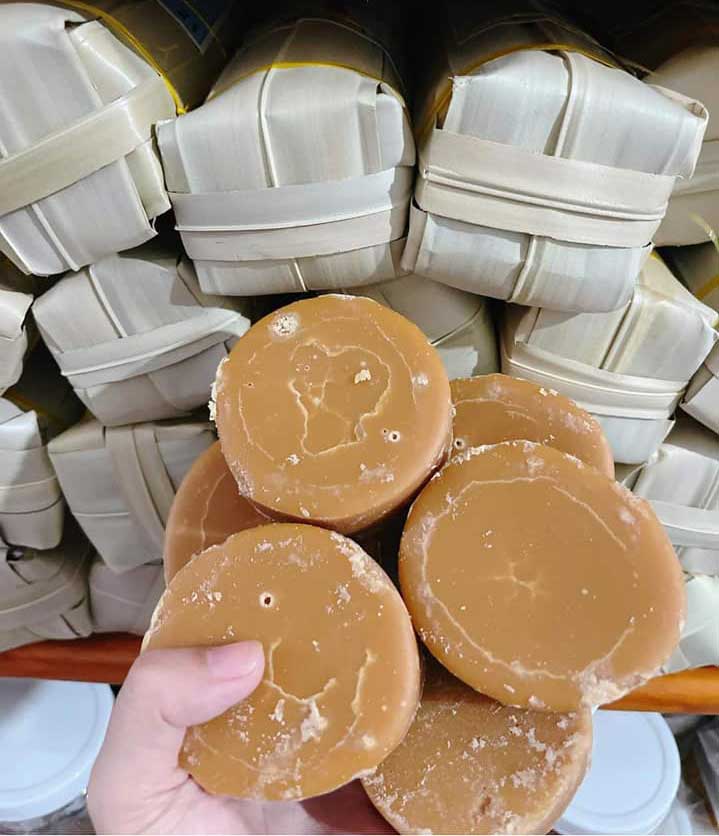
Palm sugar products are a favourite gift for visitors to An Giang
Palm sugar embodies the essence of Khmer culture and the sustainable relationship between people and nature. By buying and tasting it, visitors are not only enjoying a natural, healthy sweetener but also supporting local communities. Today, tours to palm sugar villages are becoming increasingly popular. Travelers can watch artisans climb trees to collect sap, participate in boiling and stirring, and enjoy freshly made sugar with tea or local cakes. Such experiences bring tourists closer to the daily lives of Khmer families and foster respect for their cultural traditions.
The enduring sweetness of An Giang
In every block of palm sugar lies the generosity of nature, the patience of artisans, and the cultural richness of the borderland. More than just a culinary specialty, palm sugar has become a symbol of the Khmer people’s resilience and creativity, passed down from generation to generation. For anyone visiting An Giang, tasting palm sugar is not only a delight to the senses but also a journey into the heart of a land where tradition and flavor endure together.
Tourism Information Technology Center

